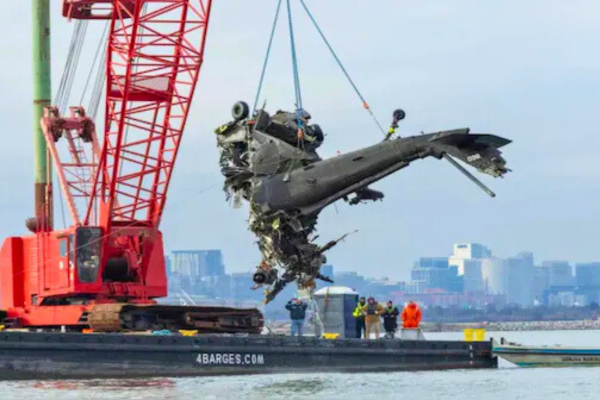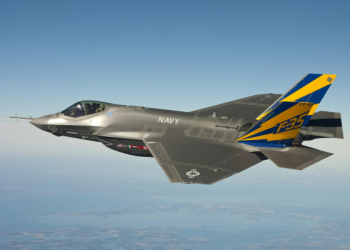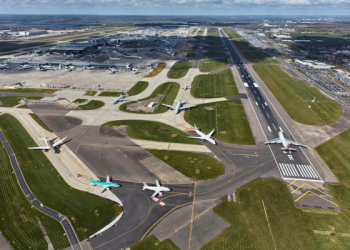The mid-air collision near Ronald Reagan Washington National Airport on January 29 continues to raise pressing questions. The tragedy, involving a PSA Airlines Bombardier CRJ700 operating as American Eagle Flight 5342 and a U.S. Army Black Hawk helicopter, left 67 people dead. As investigators recover critical evidence, fresh details about altitude violations and safety lapses are emerging.
The National Transportation Safety Board (NTSB) has made significant progress, retrieving large sections of the CRJ700 wreckage from the Potomac River. Among the recovered parts are the right wing, center fuselage, vertical stabilizers, and cockpit components. “This recovery process is crucial to piecing together what happened in the moments before the collision,” the NTSB stated.
Helicopter Altitude Breach Raises Safety Concerns
Key data revealed that the Black Hawk was flying at 300 feet—100 feet above the FAA’s permitted altitude for the area. The NTSB noted discrepancies in the flight data recorder timestamps, complicating efforts to validate the altitude breach. “We are still manually creating timestamps to ensure accuracy,” investigators explained, emphasizing the complexity of the task.
The collision occurred on ROUTE 4, a restricted path for helicopters, just east of the airport and near runway 33/15. While the CRJ700 was cleared to land, the Black Hawk’s deviation raises critical questions about air traffic control protocols and compliance.
Honoring Victims and Supporting Families
In a heartfelt gesture, American Airlines CEO Robert Isom called for a moment of silence on February 5 to honor the victims. “Our priority remains supporting the families and everyone impacted,” Isom said. He also visited the airline’s Wichita-based team, where the flight originated.
Investigators Face Challenges
The recovery of the Black Hawk wreckage remains pending, with its flight data recorder posing technical challenges. Meanwhile, synchronization work on cockpit voice recorders for both aircraft is ongoing. A preliminary NTSB report is expected within 30 days.
As the investigation unfolds, the aviation community faces tough questions about how to prevent such tragedies. With altitude breaches and traffic control practices under scrutiny, systemic changes may lie ahead. “This is a wake-up call for the industry,” an aviation expert noted.
Read more on DC Plane Crash: Army identifies soldier as investigators uncover altitude breach









![Ford to sell used vehicles on Amazon [Source Reuters]](https://autojournal.africa/wp-content/uploads/2025/11/Ford-Hyundai-to-sell-used-vehicles-on-Amazon-Source-Reuters-350x250.png)
![regional air travel in UK [Source Manufacturing Outlook]](https://autojournal.africa/wp-content/uploads/2025/11/regional-air-travel-in-UK-Source-Manufacturing-Outlook-350x250.png)










